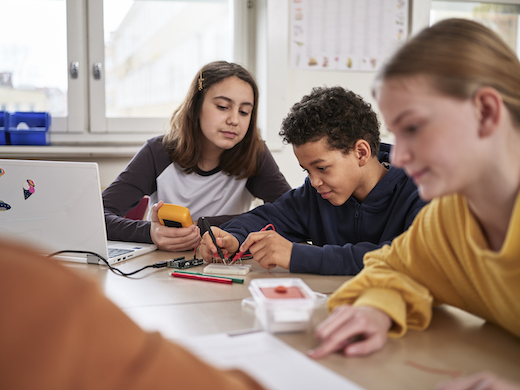What does it look like to transform STEAM activities in your classroom? Hands-on learning experiences can change the way students interact with content and the way they understand the applications of what they’ve learned. Getting hands-on with STEAM activities can help students discover new concepts instead of simply reading about them.
If you heard my conversation with physics educator Alan Bates on the Easy EdTech Podcast, then you know the power of hands-on learning in a science classroom. In the episode, we talked about the benefits of hands-on learning and how educators can prepare students for these experiences. You can listen to the full episode with our conversation by finding the Easy EdTech Podcast on your favorite podcast app (like Apple Podcasts or Spotify), clicking here to see the show notes page, or pressing play below to find out more.
Hands-On STEAM Activities
What is STEAM? STEAM is an acronym for interdisciplinary education that focuses on the intersection of science and technology, engineering, the arts, and mathematics. In a STEAM classroom, hands-on learning experiences can help students see connections across multiple disciplines.
To transform traditional science education into engaging STEAM activities, providing students with opportunities to get hands-on can help them learn complex concepts and skills. Instead of reading about a concept and only learning about the theory, they can directly explore new ideas and skills. These learning experiences provide students with an opportunity to apply their theoretical knowledge to real-world situations.
Learn more about Arduino Education >>
STEAM Activities in Action

So you’re committed to bringing STEAM activities to your classroom. But what does this look like in action? First, we know that getting hands-on is essential for learning STEAM subjects.
If you and your school are committed to offering STEAM activities to students throughout the school year, Arduino Education has lots of options to explore. They have solutions for educators that include everything you’ll need for successful STEAM activities. This includes giving educators access to the learning content, hardware, software, and dedicated support they’ll need to make it happen.
Arduino Education supports educators with the solutions they need to feel at ease in delivering successful online and in-class STEAM lessons. I love how they have designed resources that make implementation possible for educators with a variety of levels of experience. Educators get access to guided training, resources, ideas, and tips from the Arduino community to help them launch STEAM activities in their classrooms.
Hands-On Learning with a Science Journal App
One way that Arduino Education helps educators facilitate hands-on learning experiences is with their Science Journal App. The Science Journal App is totally free and helps students gather data about the world around them using their smartphone and sensors connected to an Arduino. The Science Journal App can transform a smartphone, tablet, or even a Chromebook into a digital notebook. And it even talks to your Google account so you can sync your science experiments to Google Drive.
I really love how the Science Journal App helps students stay mobile and gather data on the go. It’s a great option if you don’t have a dedicated lab space. Or if you are integrating a science activity into an interdisciplinary experience. The app works in combination with the sensors available on your smartphone or tablet. And of course, it also works with external sensors like the Arduino MKR WiFi 1010 and the Arduino Nano 33 BLE Sense.
Note: Wondering what sensors are already built into your smartphone? The most commonly-available built-in mobile sensors are: compass, ambient light, magnetometer, sound intensity, and pitch.
Getting Started with STEAM Activities.
The Science Journal App gives students access to content distributed by their teacher so they can access it from anywhere. Arduino Education has lots of content ready for teachers to explore. So you can use their ready-to-go resources or your own science lesson plans. The content is aligned to NGSS, too.
If you are a science teacher, download the Arduino Science Journal App to take a look. You’ll have the option to start your free 30-day trial of the Teacher Plan to enhance your experience.
The team at Arduino Education has created a special discount code for readers of the blog. If you head to this page and use promo code MONICABURNS2022, it will give you 20% off your first purchase of Arduino Education solutions. This code is for a limited time, so make sure to check it out sooner than later.







